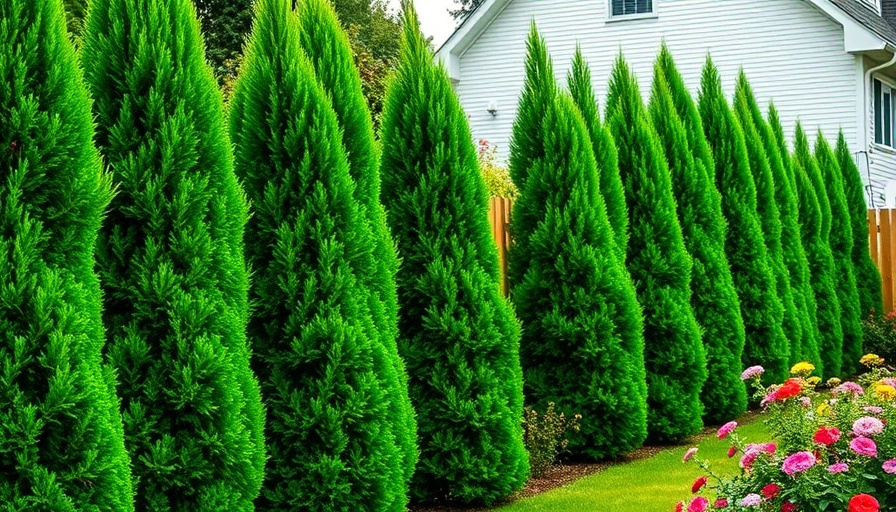
Finding the Perfect Natural Privacy Screen for Your Home
For many homeowners, finding the right balance between seclusion and openness in their yards is a persistent challenge. A wooden fence often serves as a boundary marker, but it falls short in providing the tranquility many desire in their backyards. Luckily, there are numerous plant options that not only offer privacy but also enhance the aesthetics of your outdoor space. Below we explore stunning plant varieties that grow tall and dense, creating a personal oasis right outside your back door.
Top Plants to Consider for Your Privacy Screen
Here are some of the best plants that can grow taller than a standard six-foot fence:
1. Emerald Green Arborvitae
This classic evergreen is a favorite for privacy screens, known for its dense wall of foliage that remains in a tidy shape with minimal effort. It’s perfect for lining a fence while providing a touch of elegance to your landscape.
2. Leyland Cypress
If you’re in need of a fast-growing privacy solution, the Leyland Cypress is one of the quickest options available. This stately tree rapidly fills in to conceal unwanted views.
3. Japanese Privet
With its lush, glossy leaves, the Japanese Privet is another great choice. This versatile shrub can thrive in sun or partial shade, and it can be shaped to fit a formal hedge or left to grow more wild.
Strategies for Successful Planting
To create an effective privacy screen, it’s vital to understand best planting practices that ensure plants establish themselves successfully. Here are some tips:
Space Appropriately
When planting these privacy varieties, spacing is crucial. Make sure to give each plant enough room to grow without overcrowding, thereby ensuring healthy development and optimal growth.
Regular Pruning
Pruning can guide the growth direction of certain plants, allowing you to maintain th density and shape you desire. For example, regular trimming can keep the Japanese Privet thick and lush.
Why Blooming Plants Can Enhance Your Privacy Screen
Integrating flowering varieties such as the Rose of Sharon or Camellia can add aesthetic interest to your privacy screen. These plants not only provide coverage but also bring vibrant colors and fragrances that can transform your outdoor experience.
Future Trends in Landscaping for Privacy
As more homeowners seek sanctuary in their backyards, the trend towards using natural barriers is set to rise. The incorporation of environmentally friendly plants that support local wildlife while also achieving privacy offers a dual benefit, reflecting a growing commitment to sustainability.
Native Plants as a Sustainable Option
Choosing native plants for your privacy screen not only yields a lush landscape but contributes to local biodiversity. Plants like the Eastern Red Cedar serve this dual purpose of providing privacy while being low-maintenance and supportive of native ecosystems.
Common Misconceptions and Myths About Privacy Screens
Many believe that privacy can only be achieved through solid structures like fences. However, incorporating plants provides a more flexible and visually pleasing solution. Plants can grow taller than fences and act as natural sound barriers, adding an additional layer of privacy and tranquility.
Embracing Nature for Enhanced Outdoor Living
As outdoor spaces evolve, the need for natural beauty alongside functionality grows. Establishing a privacy screen with plants isn't just about blocking views; it's about creating a personal retreat—an environment that fosters relaxation and connection with nature.
Creating a natural privacy screen requires thoughtful planning and attention to your space's unique attributes. By selecting the right plants and implementing effective maintenance strategies, you can easily transform your outdoor space into a serene sanctuary.
If you're ready to redefine your backyard experience, consider adding these stunning plants to your landscape. Contact your local nursery for tips or visit gardening workshops to gain more insights on designing a privacy screen that suits your lifestyle.
 Add Row
Add Row  Add
Add 




 Add Row
Add Row  Add
Add 

Write A Comment